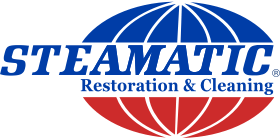Fireplace and chimney maintenance are crucial for Colorado homeowners and business owners because the region relies heavily on fireplaces.
Learn how to clean a chimney and fireplace. Know how to clean your chimney from the inside, inspect your fireplace, and determine when professional help is needed.
Understanding the Importance of Chimney and Fireplace Maintenance
Soot and creosote buildup in chimneys are highly flammable, posing a risk of chimney fires that could spread throughout the building. Blockages can also prevent proper ventilation, causing dangerous carbon monoxide levels indoors.
A clean chimney also ensures smoke exits smoothly, making your home more comfortable and lowering energy costs by improving heating efficiency.
Tools and Materials Needed for Fireplace and Chimney Cleaning
Gathering the right tools and materials is vital for cleaning a chimney and fireplace safely and effectively. Start with a chimney brush to clear soot and creosote from the flue. Choose a brush that matches your chimney’s dimensions, and use extension rods to reach the entire length of the chimney.
An ash vacuum collects fine debris without spreading dust around your home. Wear a dust mask and safety goggles to avoid inhaling harmful particles and keep your eyes safe.
Cover nearby furniture and floors with drop cloths or tarps. Access the chimney from the roof using a sturdy ladder.
A shovel and metal bucket are handy for removing ash and debris from the fireplace. Use a stiff-bristle brush and a mild detergent to clean the fireplace walls and grate.
Step-by-Step Guide to Cleaning Your Chimney
Cleaning your chimney from the inside requires preparation to ensure safety and efficiency. Follow these steps to get the job done right.
1. Prepare the Area
Lay down drop cloths or tarps to catch any soot or dust. Wear protective gear, such as a dust mask, safety goggles, and gloves, to shield yourself from fine particles and debris.
2. Inspect the Chimney
Conduct a visual inspection of your chimney. Look for cracks, loose bricks, or any signs of damage. Check for blockages that might obstruct airflow.
Call a professional chimney sweep if you find significant issues or blockages you can’t handle. They have the tools and expertise to fix these problems safely.
3. Clean the Chimney Flue
To clean the flue, use a chimney brush that fits your chimney’s size. Attach it to extension rods to reach the entire length. Start at the top and work your way down. Use an ash vacuum to remove loosened debris from the fireplace.
How to Clean a Fireplace
After tackling the chimney, shift your attention to the fireplace. Here are some guidelines for completing the task correctly.
1. Remove Ash and Debris
Ensure the fireplace is completely cool. Use a metal shovel to scoop out ash and larger debris, placing them in a metal bucket. This is necessary because ashes can stay hot for days and might ignite if stored in a plastic container. An ash vacuum is ideal for finer particles. Dispose of ashes safely, away from anything flammable.
2. Clean the Fireplace Interior
A stiff-bristle brush dipped in warm water, and mild detergent will help scrub away soot and residue from the walls and grate. For tougher stains, try a paste of baking soda and water. Apply it to the stains, let it sit for 15 minutes, then scrub with your brush. Rinse with clean water and wipe down with a damp cloth.
When to Hire a Professional Chimney Sweep
If it’s been over a year since your last cleaning or if you spot significant creosote buildup or structural damage, it’s time to call in the experts. Professional sweeps have the tools and know-how for chimney and fireplace inspection and cleaning. If your chimney has experienced a fire before or if you’re unsure about its condition, professional services can offer peace of mind and prevent future problems.
Regular chimney and fireplace upkeep is key to safety and efficiency, but when cleaning your Colorado home, you should consider all aspects.
Image Source: Michael Vi // Shutterstock






